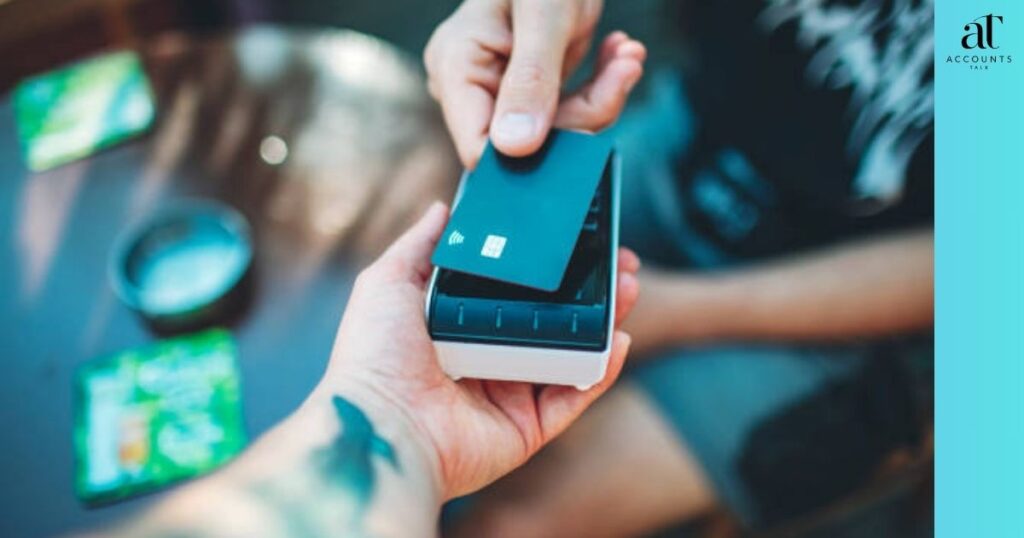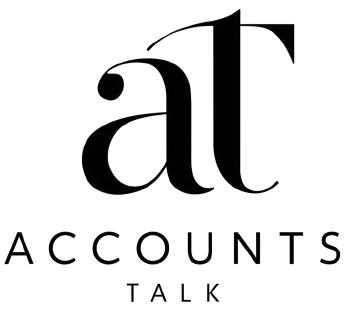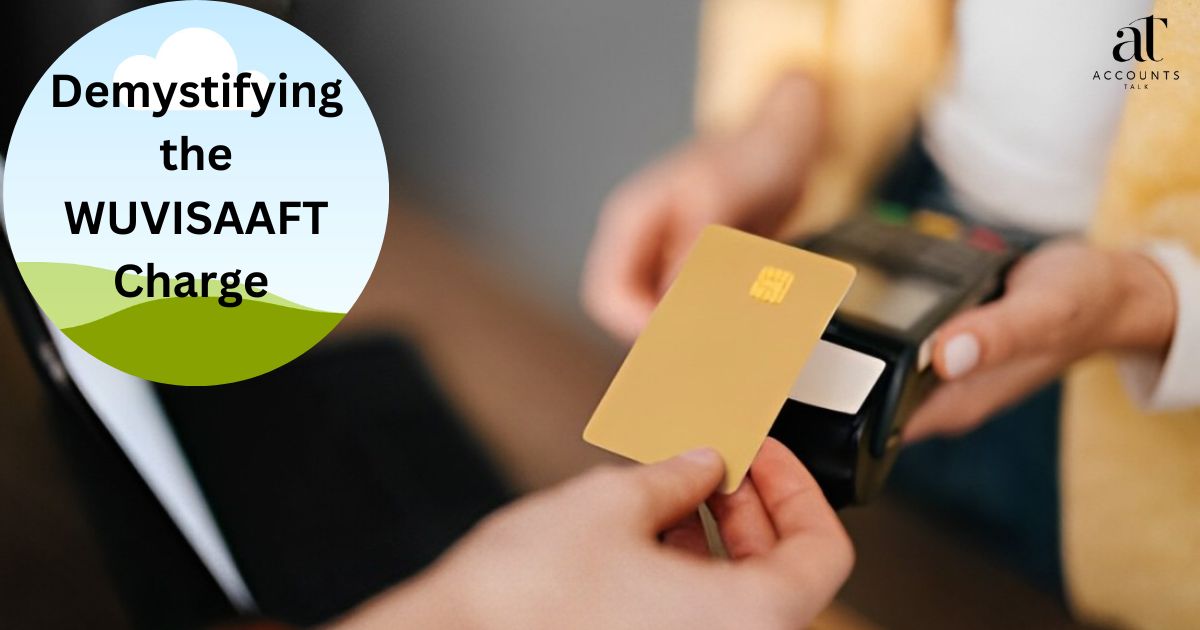Ever glanced at your bank statement and spotted a mysterious “WUVISAAFT” charge? Don’t worry, you’re not alone. Many Americans find themselves scratching their heads when they see this cryptic code on their financial records. But fear not!
We’re about to unravel the mystery of the WUVISAAFT charge and explain why it matters to you.
What Is the WUVISAAFT Charge on Bank Statement?
Let’s cut to the chase: WUVISAAFT stands for Western Union Visa Credit Account Funding Transaction. It’s a mouthful, right? But don’t let that intimidate you. This charge appears when you use a Visa card to conduct a transaction through Western Union, one of the world’s largest money transfer services.
Think of it as a financial fingerprint – it’s unique to transactions that involve both Western Union and Visa. You might see it pop up if you’ve sent money to a friend overseas, paid an international invoice, or even received funds from abroad.
Why Should You Care?
Understanding this charge is crucial for several reasons:
- It helps you keep track of your spending
- It ensures you’re not being overcharged
- It allows you to spot any unauthorized transactions quickly
Remember, knowledge is power, especially when it comes to your hard-earned cash!
More Post: Decoding the Int’l Digital Charge Mystery on Your Bank Statement
Decoding the Charge Code: WUVISAAFT

Let’s break down this alphabet soup and see what each part means:
- WU: Western Union
- VISA: Visa card
- AFT: Account Funding Transaction
When you see these letters together, it’s like a shorthand way of saying, “Hey, you used your Visa card to fund a Western Union transaction!“
Here’s a quick comparison to help you visualize:
| Code | Meaning |
| WU | Western Union (the service you used) |
| VISA | The type of card you used for the transaction |
| AFT | Account Funding Transaction (what you did) |
Imagine you’re sending $100 to your cousin in Canada. You might see something like this on your statement:
05/15/2023 WUVISAAFT 8003256000 $103.99
That extra $3.99? That’s likely the fee for using the service. Always keep an eye on these charges to ensure they align with what you expected to pay.
What is the “wuvisaaft” charge?
Now that we’ve cracked the code, let’s dive deeper into what this charge really means for your wallet.
The WUVISAAFT charge is essentially a record of a financial transaction where you’ve used your Visa card to send money through Western Union. It’s not an extra fee in itself, but rather a description of the transaction type.
Here’s the deal: When you use Western Union, you’re tapping into a global network that can move money at lightning speed. That convenience comes at a cost, which is where the charge comes in. Western Union makes its money by charging fees for currency exchange and fund transfers.
“The WUVISAAFT charge is like a receipt for using a financial expressway – it’s proof you’ve used a fast, convenient service to move your money.“
Types of Transactions That Might Trigger a WUVISAAFT Charge:
- Sending money to family abroad
- Paying for goods or services internationally
- Receiving funds from overseas
- Topping up a prepaid card
- Emergency cash transfers
Remember, each of these transactions might come with its own fee structure, so always check the details before you hit “send“!
Why does the “WUVISAAFT” charge appear on my bank statement?

If you see a WUVISAAFT charge on your statement, don’t panic! It’s a legitimate charge that indicates you’ve conducted a transaction through Western Union using a Visa card. It’s Western Union’s way of saying, “Yep, we moved your money as requested!“
Here’s why you might see this charge:
- Transparency: Banks and financial services are required to provide clear records of all transactions.
- Tracking: It helps you (and your bank) keep track of specific types of transactions.
- Security: In case of any disputes or fraud, this specific code makes it easier to trace the transaction.
Case Study: The Curious Case of the Unexpected WUVISAAFT
Meet Sarah, a freelance graphic designer from New York. She recently landed a big client in Paris and was thrilled when they sent her first payment. However, her excitement turned to confusion when she saw a WUVISAAFT charge on her statement.
After a bit of research (and a quick call to her bank), Sarah learned that her client had used Western Union to send the payment, and it was processed through her Visa-linked account. Mystery solved! Sarah now knows to expect this charge whenever she receives international payments through this method.
What does square charges fees mean on bank statements?
While we’re on the topic of mysterious charges, let’s take a quick detour to discuss Square charges. These are different from WUVISAAFT charges but can be equally puzzling if you’re not familiar with them.
Square is a popular payment processing service used by many small businesses and independent sellers. If you see a Square charge on your statement, it likely means you’ve made a purchase from a merchant who uses Square to process payments.
Here’s a quick comparison:
| Charge Type | Associated With | Typical Use |
| WUVISAAFT | Western Union & Visa | International money transfers, remittances |
| Square | Square payment processing | Purchases from small businesses, craft fairs, food trucks |
Understanding these distinctions can help you better track your spending and ensure all charges on your statement are legitimate.
How does the “WUVISAAFT” charge appear on a bank statement?

The WUVISAAFT charge might not always appear in the same format on your bank statement. Banks and regions may have slight variations in how they display this information. Here are some common ways you might see it:
- WUVISAAFT
- WUVISAAFT 8003256000 (Western Union’s customer service number)
- WU 800-325-6000 CO
- WU 800-325-6000 CO US
- Western Union
- WU Pay
- WU Deposit
- WU Transfer
- WU Payment
- WU Reload
- WU E-check Deposit
Pro Tip: If you’re ever unsure about a charge on your statement, don’t hesitate to contact your bank or Western Union directly. It’s always better to ask than to ignore something you don’t understand!
How to Avoid “wuvisaaft” Bank Charges
While WUVISAAFT charges aren’t inherently bad, you might want to minimize them if you’re looking to reduce transaction fees. Here are some strategies to help you do just that:
More Post: What is ACHMA VISB BILL PYMNT on Your Bank Statement?
1. Conduct transactions through your bank:
Many banks offer international transfer services that might be cheaper than using Western Union. Here’s what you can do:
- Check if your bank has partnerships with banks in the country you’re sending money to
- Compare your bank’s fees with those of Western Union
- Consider setting up an international account if you frequently send money abroad
2. Regularly review charges:
Stay on top of your finances by:
- Setting aside time each week to review your transactions
- Using your bank’s mobile app for real-time updates
- Keeping a personal log of your Western Union transactions to cross-reference with your statement
3. Set up alerts:
Let technology do some of the work for you:
- Set up SMS or email alerts for all transactions
- Create custom alerts for transactions over a certain amount
- Use your bank’s app notifications to stay informed
4. Minimize unnecessary transactions:
Be strategic about your money transfers:
- Bundle multiple small transfers into one larger transfer to save on fees
- Plan ahead to avoid emergency transfers, which often come with higher fees
- Explore alternative payment methods for regular transactions (e.g., international bank transfers for business payments)
In conclusion:
Understanding the WUVISAAFT charge on your bank statement is more than just decoding a jumble of letters. It’s about taking control of your finances and being aware of how your money moves around the globe.
Let’s recap the key points:
- WUVISAAFT stands for Western Union Visa Credit Account Funding Transaction
- It appears when you use a Visa card for Western Union transactions
- The charge itself is not a fee, but the transaction may include fees
- It can appear in various formats on your bank statement
- There are strategies to minimize these charges if desired
Remember, financial literacy is a journey, not a destination. By understanding charges like WUVISAAFT, you’re taking important steps towards mastering your money. Keep asking questions, stay curious, and don’t be afraid to seek help when you need it.
Your financial future is in your hands – make every transaction count!
More Post:

Mia Hazel is a finance expert and the author behind insightful content that simplifies complex financial concepts. With a passion for empowering readers to make informed financial decisions, Mia breaks down everything from budgeting to investments with clarity and precision.
Her work is dedicated to helping individuals navigate the financial world with confidence and achieve their financial goals. Follow her for practical tips and advice on all things finance.

